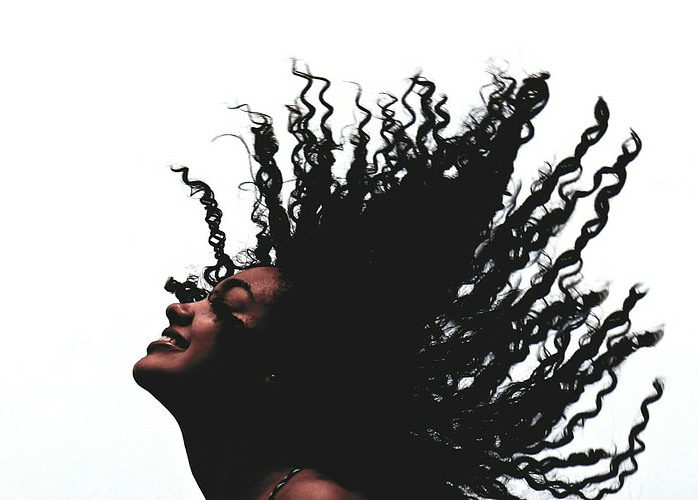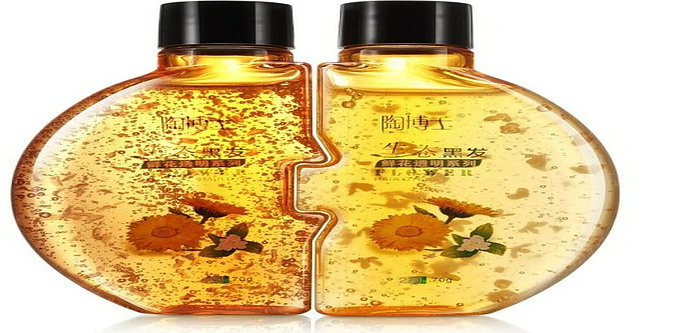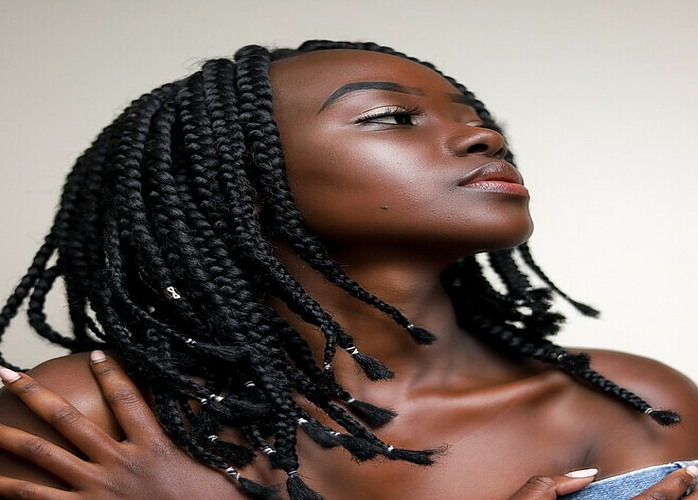The Ultimate Guide to Afro Hair Care Routines
Developing a personalized hair care routine: Assessment of hair needs
Developing a personalized hair care routine begins with assessing the specific needs of your hair. Here’s a step-by-step guide to help assess your hair’s needs:
- Hair Type: Determine your hair type using classification systems like the Andre Walker Hair Typing System (Type 3 – Curly, Type 4 – Coily/Kinky) or other systems that identify your hair’s texture, curl pattern, and porosity.
- Porosity: Assess your hair’s porosity by conducting a simple test. Take a clean strand of hair and place it in a bowl of water. If it sinks quickly, it likely has high porosity (absorbs moisture rapidly). If it floats for a while before sinking, it may have low porosity (struggles to absorb moisture).
- Texture and Density: Determine the texture (fine, medium, coarse) and density (thin, medium, thick) of your hair. Understanding these aspects helps in selecting appropriate products and styling techniques.
- Current Hair Condition: Evaluate your hair’s current condition. Note any issues such as dryness, breakage, split ends, or scalp concerns. Understanding your hair’s condition helps tailor your routine to address specific issues.
- Styling Habits and Frequency: Consider your typical styling routine, including how often you wash, use heat styling tools, or opt for protective styles. Assess whether these practices contribute to any damage or dryness.
- Product Sensitivity and Preferences: Take note of any products or ingredients that have caused adverse reactions or those that work exceptionally well for your hair. Consider your preferences, such as preference for natural or specific types of products.
- Lifestyle Factors: Consider your lifestyle, such as exercise frequency, exposure to environmental elements (sun, wind, pollution), and how these factors might affect your hair care routine.
- Time Commitment: Assess the time you’re willing to dedicate to your hair care routine. Determine if you prefer simpler routines or are open to more elaborate care practices.
- Long-Term Goals: Identify your hair care goals, whether it’s achieving length, improving overall health, reducing breakage, or maintaining a specific style.

Once you’ve assessed these aspects, you can create a personalized hair care routine that addresses your hair’s specific needs:
- Cleansing: Choose appropriate shampoos based on your hair type, porosity, and scalp condition. Adjust washing frequency to suit your hair’s needs.
- Conditioning: Incorporate deep conditioning treatments, leave-in conditioners, or masks to address moisture and nourishment needs.
- Styling and Maintenance: Select products and techniques that align with your hair’s characteristics and styling preferences. Incorporate protective styles or low-manipulation styles to promote hair health.
- Scalp Care: Include scalp massages, treatments, or oils to maintain a healthy scalp environment, which is crucial for hair growth.
- Trimming: Schedule regular trims to remove split ends and maintain healthy hair growth.
- Adaptation and Consistency: Be open to adapting your routine based on how your hair responds to different products and practices. Consistency is key in maintaining healthy hair.
Remember, developing a personalized hair care routine is a gradual process that involves experimentation and observation to find what works best for your hair’s unique needs. Regularly reassess and adjust your routine as necessary to ensure your hair remains healthy and well-cared for.

Choosing the right products: From shampoos to leave-in conditioners
Choosing the right hair care products, from shampoos to leave-in conditioners, plays a significant role in maintaining healthy afro-textured hair. Here are some tips for selecting the right products:
- Shampoos:
-
- Look for sulfate-free or mild shampoos that won’t strip your hair of its natural oils. Sulfates can be harsh and drying for afro hair.
- Consider shampoos formulated for your specific hair type (curly, coily, etc.) or those designed to add moisture and hydration.
- Clarifying shampoos can be used occasionally to remove product buildup and refresh the scalp, but avoid using them too frequently to prevent excessive dryness.
- Conditioners:
-
- Choose a moisturizing and hydrating conditioner that suits your hair’s texture and porosity. Look for ingredients like shea butter, coconut oil, or glycerin.
- Deep conditioning treatments are beneficial for afro hair to provide intense hydration and nourishment. Consider using them weekly or bi-weekly.
- Leave-in conditioners are great for maintaining moisture between washes and can help with detangling. Opt for lightweight formulas that won’t weigh down your hair.
- Hair Masks and Treatments:
-
- Incorporate hair masks or treatments into your routine to provide extra nourishment. Look for ingredients like argan oil, honey, or aloe vera for their moisturizing properties.
- Natural Oils:
-
- Natural oils such as coconut oil, jojoba oil, and argan oil are excellent for sealing moisture into the hair and providing essential nutrients. Choose oils based on your hair’s needs and preferences.
- Styling Products (Gels, Creams, Mousses):
-
- Choose styling products that align with your desired hairstyles and hair needs. Look for products that offer hold without causing stiffness or buildup.
- Consider water-based products as a base for your styling routine. They can hydrate the hair while allowing other styling products to layer on top.
- Leave-In Conditioners:
-
- Opt for leave-in conditioners that provide hydration and help in detangling without leaving a heavy residue. Consider sprays or lightweight creams for ease of application.
- Ingredients to Avoid:
-
- Avoid products containing harsh sulfates, silicones, parabens, and alcohol, as these can strip moisture, cause buildup, or lead to dryness and damage over time.
- Trial and Observation:
-
- Experiment with different products to find what works best for your hair. Keep a lookout for how your hair responds, whether it feels moisturized, retains styles, or experiences less breakage.
- Consider samples or travel-sized versions of products before committing to full-size purchases.
- Professional Recommendations:
-
- Seek advice from hair professionals or stylists who specialize in afro-textured hair. They can offer personalized recommendations based on your hair’s unique needs and characteristics.
Remember, everyone’s hair is unique, so what works for one person might not work for another. It’s essential to listen to your hair, observe its response to products, and adapt your routine accordingly to maintain healthy and vibrant afro-textured hair.

Detangling without damage: Tips and techniques for Afro hair
Detangling afro-textured hair requires patience, gentle handling, and the right tools to prevent damage and breakage. Here are some tips and techniques for detangling afro hair effectively:
- Start with Moisturized Hair: Before detangling, ensure your hair is damp or moisturized. Use a water-based leave-in conditioner or a detangling spray to add moisture, making the hair more manageable and reducing breakage.
- Section Your Hair: Divide your hair into manageable sections using hair clips or hair ties. Working in sections helps to focus on smaller areas at a time, making detangling less overwhelming and more efficient.
- Use a Detangling Tool: Opt for a wide-tooth comb, a detangling brush with flexible bristles, or your fingers. Begin detangling from the ends and work your way up to the roots, gently removing knots and tangles.
- Apply a Detangling Product: Use a detangling conditioner, hair oil, or a silicone-free detangler to provide slip and lubrication, making it easier to glide the comb or brush through your hair.
- Detangle When Wet or with Product: Some people find it easier to detangle their hair while it’s wet and saturated with conditioner. Others prefer to detangle with a product like a leave-in conditioner or oil to aid in slip and reduce friction.
- Be Gentle and Patient: Avoid rushing through the detangling process, as this can lead to more breakage. Take your time and gently work through knots and tangles, starting from the ends and gradually moving upwards.
- Finger Detangling: Using your fingers to gently separate knots and tangles can be an effective method, especially for delicate areas or very tangled sections. Apply conditioner or oil to aid in the process.
- Avoid Tearing or Ripping: Refrain from forcefully pulling through knots or ripping through tangles. This can cause damage and breakage. Instead, gently work through knots, holding the hair above the tangle to reduce tension on the roots.
- Detangle Regularly: Consistent detangling sessions, especially before washing or styling, can prevent severe tangles and matting, making the process easier each time.
- Trim Split Ends: Regular trims help to remove split ends, reducing tangling and making detangling sessions smoother.
- Protective Styling: Consider protective styles like braids or twists to minimize tangling and reduce the frequency of detangling sessions.
- Patience and Care: Approach detangling with patience and care. It might take time, especially with dense or tightly coiled hair, but gentle handling will preserve the health of your hair.
Remember, finding the right technique and tools for detangling may vary from person to person. It’s essential to listen to your hair’s needs and adjust your detangling routine accordingly to minimize damage and maintain healthy, beautiful afro-textured hair.
Protective styling options to encourage growth and reduce breakage
Protective styling is a beneficial technique for afro-textured hair as it helps minimize manipulation, tangles, and breakage, thereby promoting growth and retaining length. Here are some protective styling options to consider:
- Braids:
-
- Box braids, Senegalese twists, or cornrows are popular protective styles. Braids reduce daily manipulation, allowing the hair to rest and grow without constant styling.
- Twists:
-
- Two-strand twists or flat twists are versatile and low-maintenance styles that protect the hair by sealing in moisture and reducing tangles.
- Bantu Knots:
-
- Bantu knots are a protective style that involves twisting sections of hair and wrapping them into knots. Once released, they create beautiful curls or waves.
- Crochet Braids:
-
- Crochet braids involve attaching extensions to braided hair, creating various styles without excessive tension on the natural hair.
- Wigs and Weaves:
-
- Wearing wigs or weaves gives your natural hair a break from daily styling. Ensure they’re installed properly to prevent tension and damage to the hairline.
- Protective Updos:
-
- Updo hairstyles like buns, chignons, or French rolls can protect the ends of your hair, reducing breakage and maintaining moisture.
- Halo Braids or Crown Braids:
-
- These styles involve braiding around the perimeter of the head, which protects the edges and leaves the center free. They’re stylish and protective.
- Faux Locs or Goddess Locs:
-
- These styles involve wrapping hair with extensions to create locs. They’re a great way to give your hair a break and promote growth.
- Low Manipulation Styles:
-
- Keeping the hair in simple styles like loose twists, buns, or ponytails with minimal tension can also be protective, reducing manipulation and breakage.
- Scalp Protection:
-
- Ensure that your scalp is also protected during styling. Avoid excessive tension on the scalp to prevent hair loss or traction alopecia.
While protective styles offer several benefits, it’s crucial to maintain proper care for your hair while it’s in a protective style:
- Moisturize and Seal: Even when in a protective style, moisturize your hair and scalp regularly. Use lightweight oils or sprays to maintain moisture.
- Cleanse and Refresh: Cleanse your scalp periodically to prevent product buildup and maintain a healthy scalp environment.
- Limit Duration: Avoid leaving a protective style in for too long to prevent potential damage or matting. Typically, 4-8 weeks is a common duration, depending on the style and your hair’s needs.
- Gentle Removal: Be gentle when removing a protective style to minimize breakage. Avoid rushing or forcefully detangling the hair.
Combining protective styling with a good hair care routine can help encourage growth, retain length, and protect your afro-textured hair from breakage and damage.

Professional advice: When to seek out a specialist for your Afro hair
Seeking out a specialist for your afro-textured hair can be beneficial in various situations to address specific needs or concerns. Here are some scenarios when consulting a professional specializing in afro hair is advisable:
- Hair and Scalp Issues: If you’re experiencing persistent scalp issues like dandruff, itching, or hair loss, consulting a specialist can help identify the root cause and provide appropriate treatment or advice.
- Transitioning to Natural Hair: When transitioning from chemically treated or relaxed hair to natural hair, a specialist can offer guidance on managing two different textures and recommend suitable products and transitioning methods.
- Hair Damage or Breakage: Experiencing significant hair damage, breakage, or excessive shedding may indicate underlying issues that a specialist can assess and provide recommendations to improve hair health.
- Unfamiliar with Hair Care Needs: If you’re unsure about your hair’s specific needs, a specialist can help identify your hair type, porosity, and recommend a personalized care routine, including suitable products and techniques.
- Desire for Style Change or Protective Styling: Seeking a new style or opting for protective styles like braids, weaves, or locs? A specialist can offer advice on styles that suit your preferences while minimizing damage.
- Difficulty in Managing Hair: If you’re finding it challenging to manage or style your hair, a professional can demonstrate proper techniques for detangling, moisturizing, and styling afro-textured hair.
- Special Occasions or Events: For special occasions like weddings or important events, consulting a specialist for professional styling can ensure you achieve the desired look without compromising your hair’s health.
- Product Recommendations: Seeking advice on choosing the right hair care products, understanding ingredient lists, or finding products that work best for your hair type can be provided by a specialist.
- Overall Hair Health Concerns: Concerns about maintaining healthy hair, promoting growth, or addressing issues like dryness, brittleness, or lack of moisture can benefit from professional guidance.
- Hair Education and Maintenance: Learning about proper hair care practices, developing a personalized routine, and understanding how to maintain healthy hair can be gained from a specialist’s expertise.
When seeking a specialist for your afro-textured hair, consider professionals with experience and expertise in caring for diverse hair textures. Look for licensed cosmetologists, trichologists, or hairstylists who specialize in afro hair care. Additionally, recommendations from friends or online reviews can help you find a reputable specialist suited to your needs.
Leave a Reply